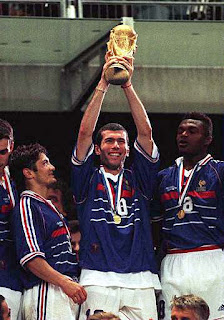 So, back in October, we undertook a journey through the history of the World Cup and have arrived at the present day. 18 tournaments, 4 continents- 7 different winners. There have been unexpected victors (1950, 1954), dubious victors (1938, 1966, 1974), but never any real surprises. In the finals in which the best teams did not win (1954, 1974) they were not beaten by rank outsiders, and even in the tournament in which the best* two sides were not in the final (1982) it was still competed by two leading nations.
So, back in October, we undertook a journey through the history of the World Cup and have arrived at the present day. 18 tournaments, 4 continents- 7 different winners. There have been unexpected victors (1950, 1954), dubious victors (1938, 1966, 1974), but never any real surprises. In the finals in which the best teams did not win (1954, 1974) they were not beaten by rank outsiders, and even in the tournament in which the best* two sides were not in the final (1982) it was still competed by two leading nations.*the world cup is actually a football fair; not a proper championship... more than half the matches are knockout ties, anything is possible. Merit doesn't count.Socrates on Spain 1982, interviewed in FourFourTwo (2010).
So- players to watch?
Messi (Argentina), Ronaldo (Portugal), Ribery(France), Drogba(Côte d'Ivoire), Villa, Xavi(Spain), Rooney(England) of course, but expect a no nonsense victory based on solid defence and counter-attack from Brazil (probably against Spain in the final).








.jpg)






















+Pra+Enlouquecer.jpg)
+mp3infantil_blogspot_com+%5B5%5D.jpg)




